Gene Exchange/Gene Mapping Techniques in Bacteria Transformation &

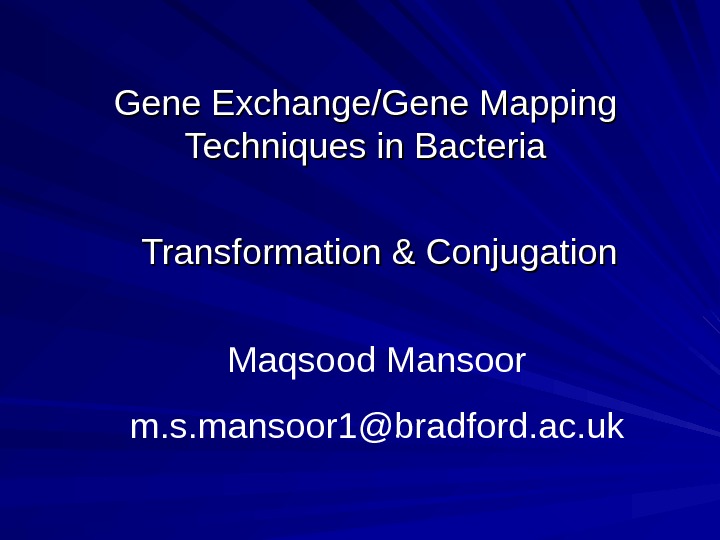
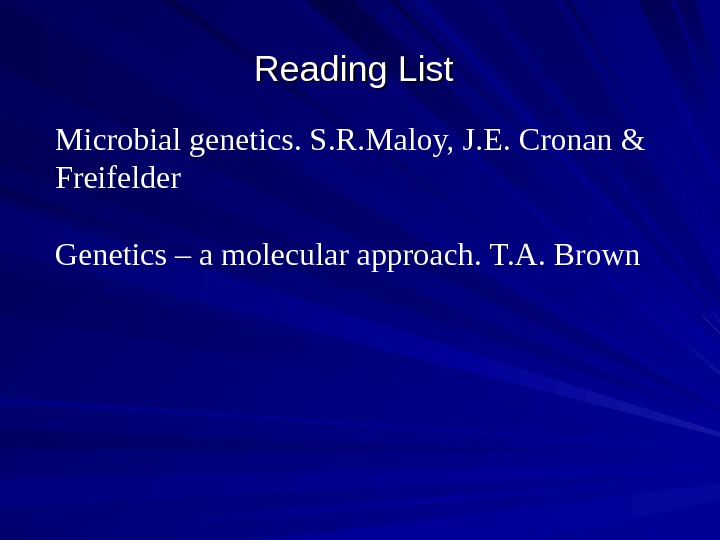
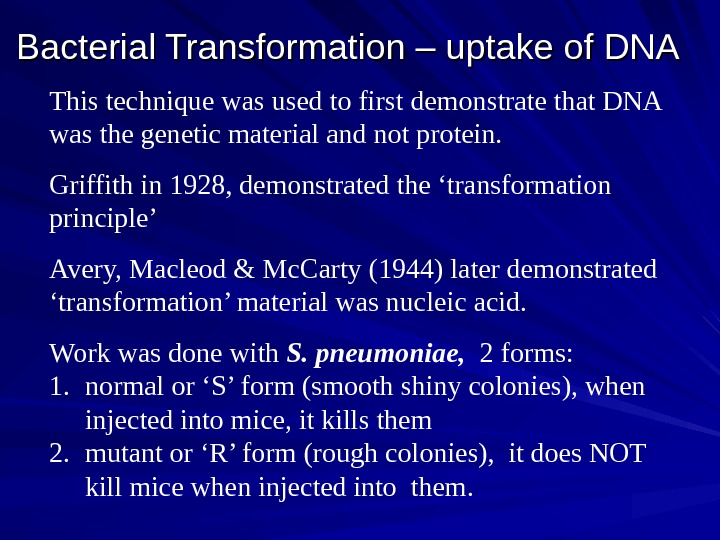
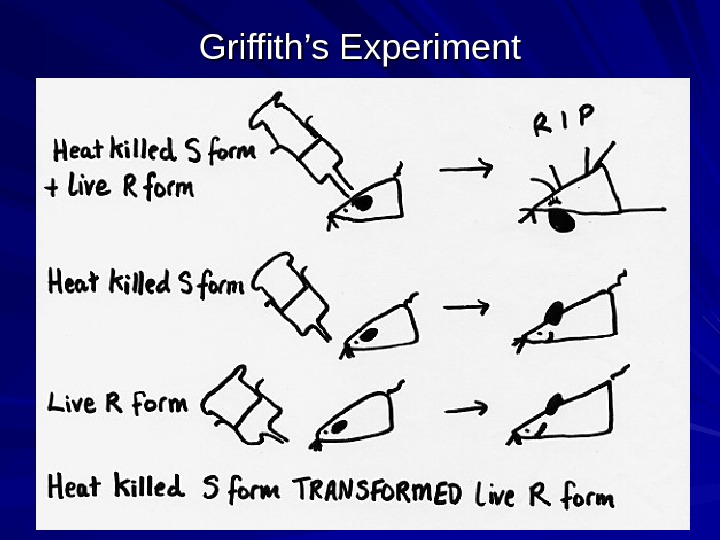
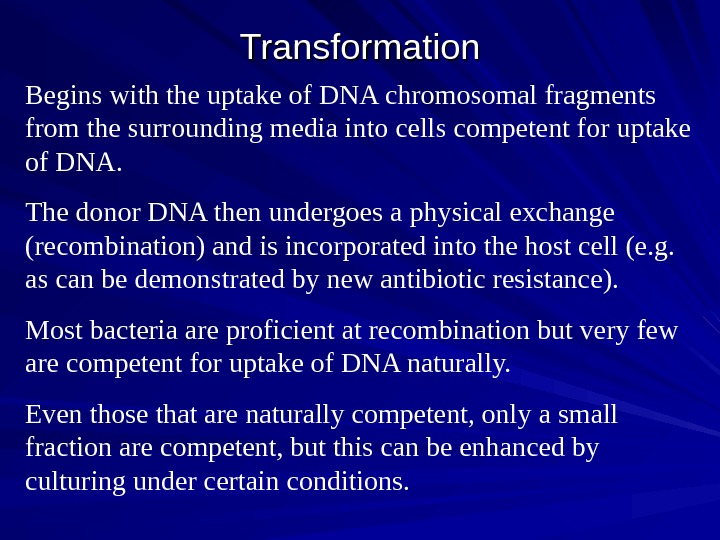
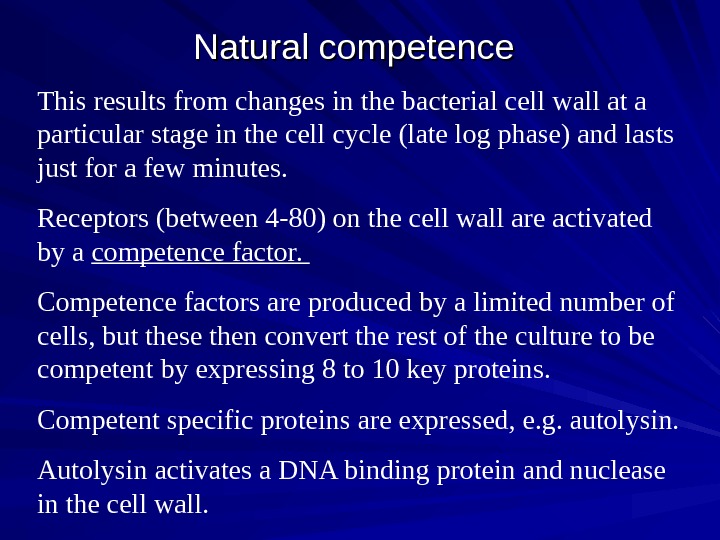
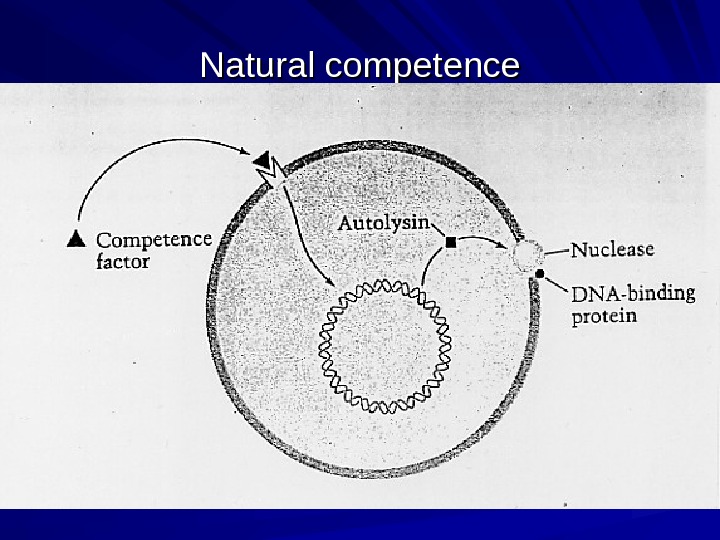

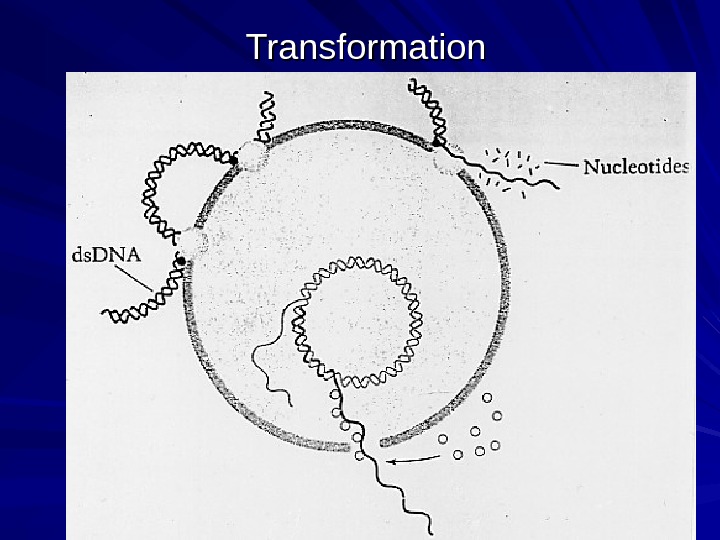
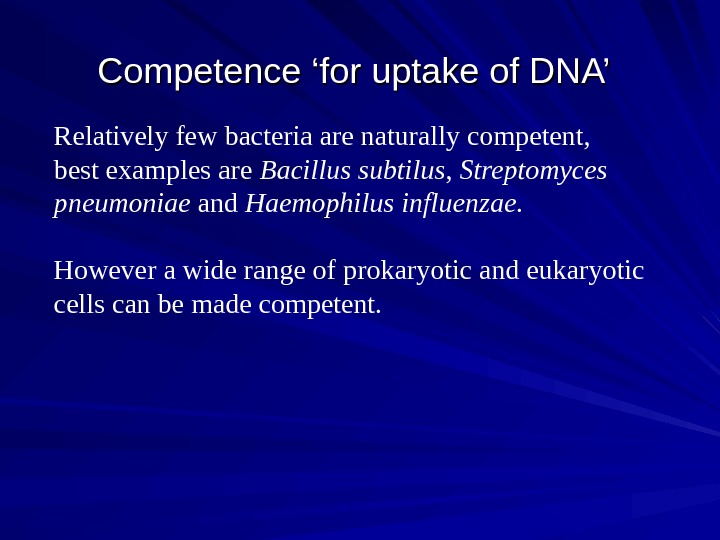
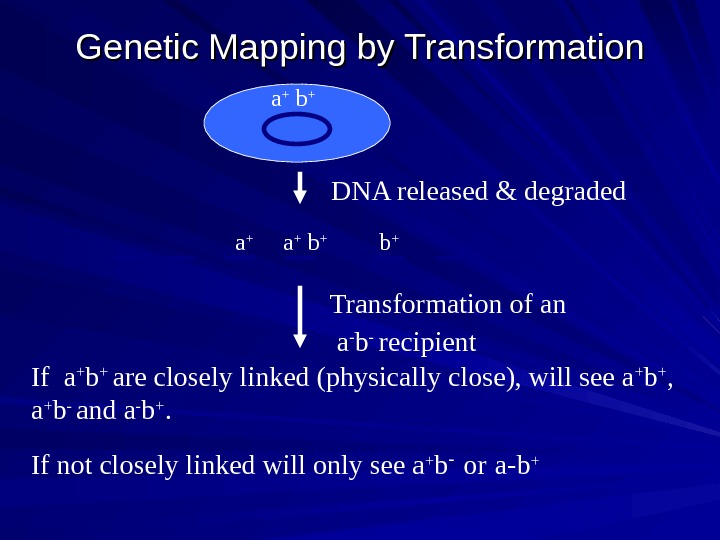
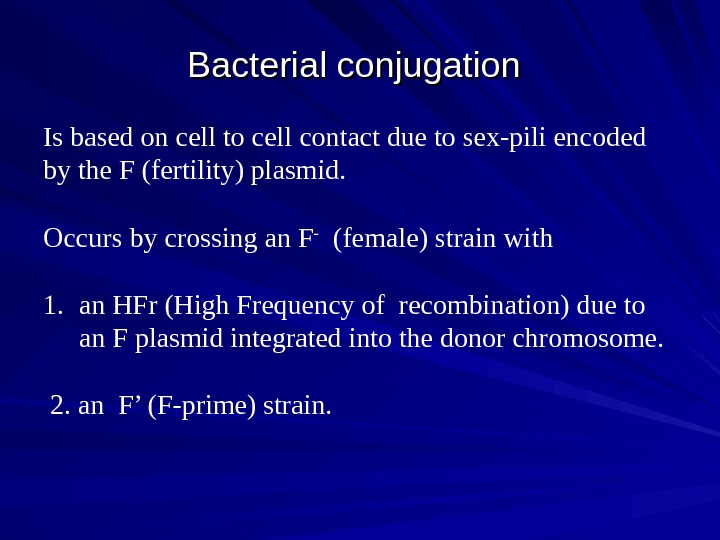
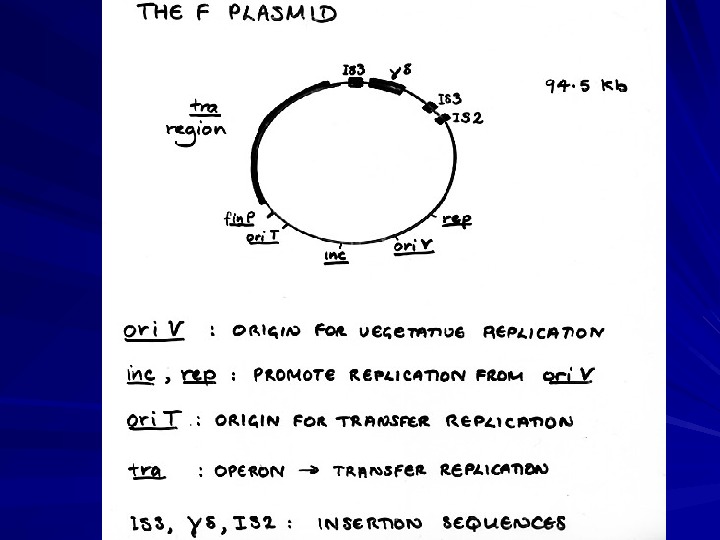
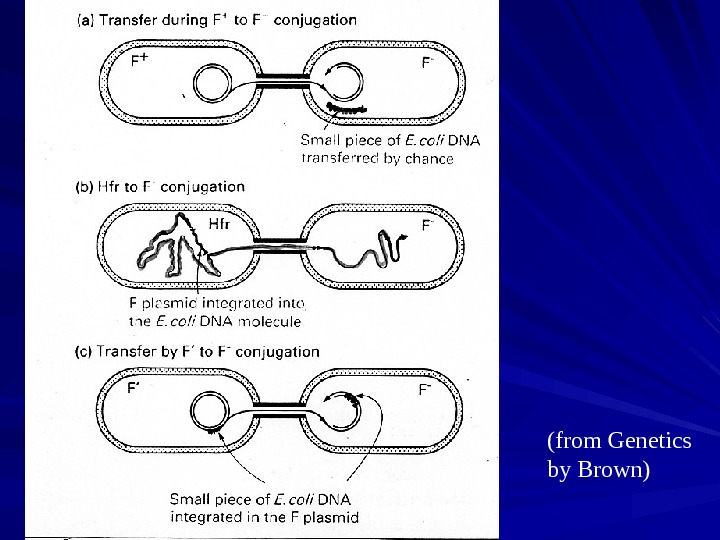
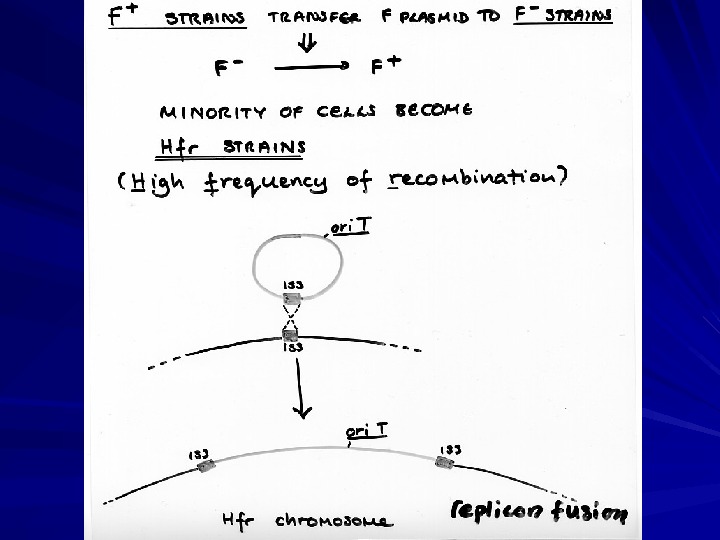
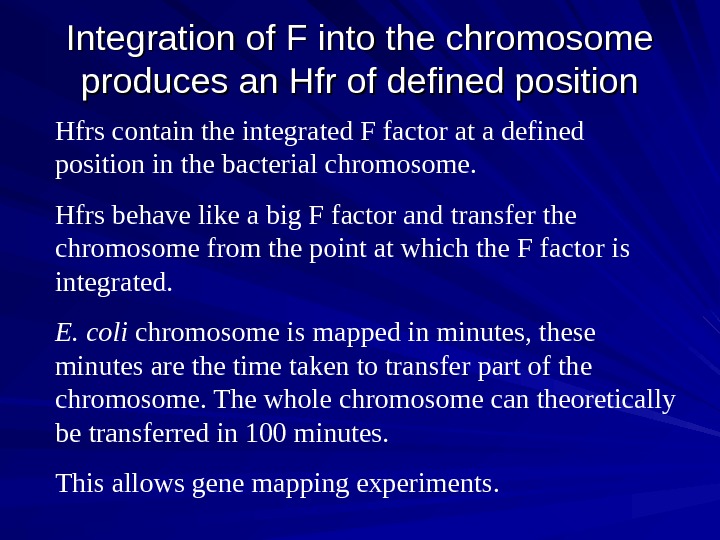

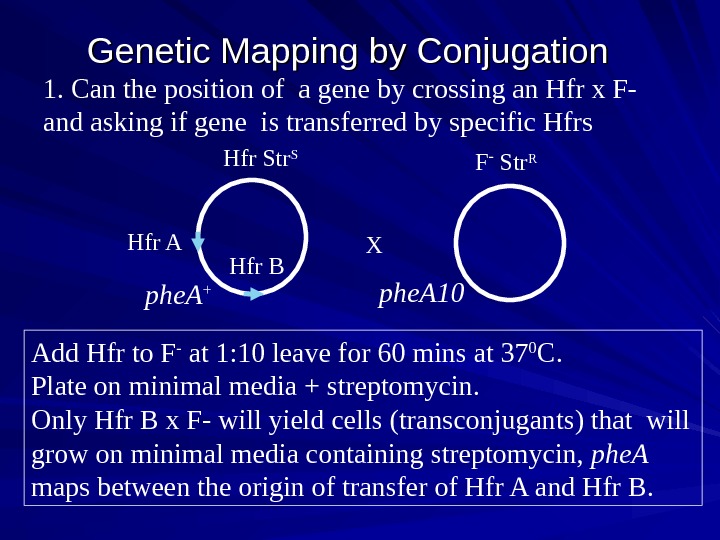
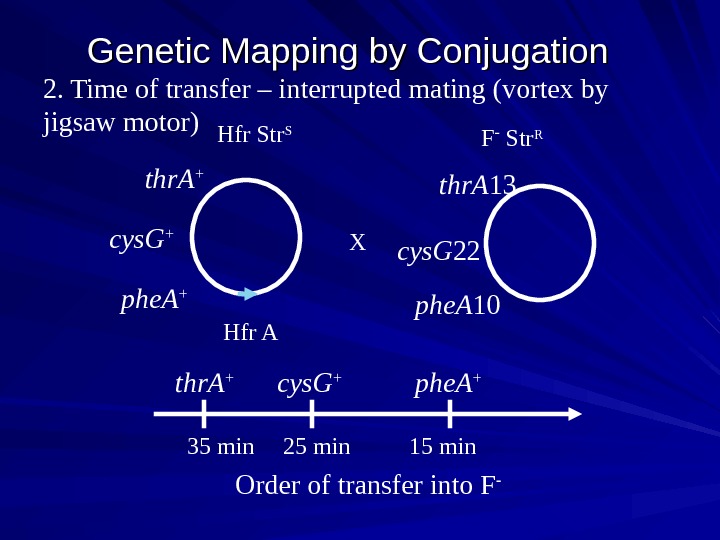

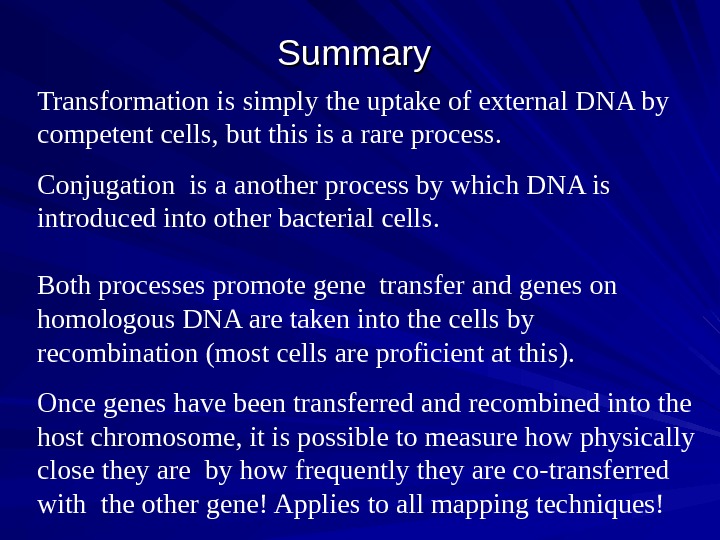
gene-exchange-in-bacteria-1.ppt
- Размер: 1.3 Mегабайта
- Количество слайдов: 21
Описание презентации Gene Exchange/Gene Mapping Techniques in Bacteria Transformation & по слайдам
 Gene Exchange/Gene Mapping Techniques in Bacteria Transformation & Conjugation Maqsood Mansoor m. s. mansoor 1@bradford. ac. uk
Gene Exchange/Gene Mapping Techniques in Bacteria Transformation & Conjugation Maqsood Mansoor m. s. mansoor 1@bradford. ac. uk
 Reading List Microbial genetics. S. R. Maloy, J. E. Cronan & Freifelder Genetics – a molecular approach. T. A. Brown
Reading List Microbial genetics. S. R. Maloy, J. E. Cronan & Freifelder Genetics – a molecular approach. T. A. Brown
 Bacterial Transformation – uptake of DNA This technique was used to first demonstrate that DNA was the genetic material and not protein. Griffith in 1928, demonstrated the ‘transformation principle’ Avery, Macleod & Mc. Carty (1944) later demonstrated ‘ transformation’ material was nucleic acid. Work was done with S. pneumoniae, 2 forms: 1. normal or ‘S’ form (smooth shiny colonies), when injected into mice, it kills them 2. mutant or ‘R’ form (rough colonies), it does NOT kill mice when injected into them.
Bacterial Transformation – uptake of DNA This technique was used to first demonstrate that DNA was the genetic material and not protein. Griffith in 1928, demonstrated the ‘transformation principle’ Avery, Macleod & Mc. Carty (1944) later demonstrated ‘ transformation’ material was nucleic acid. Work was done with S. pneumoniae, 2 forms: 1. normal or ‘S’ form (smooth shiny colonies), when injected into mice, it kills them 2. mutant or ‘R’ form (rough colonies), it does NOT kill mice when injected into them.
 Griffith’s Experiment
Griffith’s Experiment
 Transformation Begins with the uptake of DNA chromosomal fragments from the surrounding media into cells competent for uptake of DNA. The donor DNA then undergoes a physical exchange (recombination) and is incorporated into the host cell (e. g. as can be demonstrated by new antibiotic resistance). Most bacteria are proficient at recombination but very few are competent for uptake of DNA naturally. Even those that are naturally competent, only a small fraction are competent, but this can be enhanced by culturing under certain conditions.
Transformation Begins with the uptake of DNA chromosomal fragments from the surrounding media into cells competent for uptake of DNA. The donor DNA then undergoes a physical exchange (recombination) and is incorporated into the host cell (e. g. as can be demonstrated by new antibiotic resistance). Most bacteria are proficient at recombination but very few are competent for uptake of DNA naturally. Even those that are naturally competent, only a small fraction are competent, but this can be enhanced by culturing under certain conditions.
 Natural competence This results from changes in the bacterial cell wall at a particular stage in the cell cycle (late log phase) and lasts just for a few minutes. Receptors (between 4 -80) on the cell wall are activated by a competence factor. Competence factors are produced by a limited number of cells, but these then convert the rest of the culture to be competent by expressing 8 to 10 key proteins. Competent specific proteins are expressed, e. g. autolysin. Autolysin activates a DNA binding protein and nuclease in the cell wall.
Natural competence This results from changes in the bacterial cell wall at a particular stage in the cell cycle (late log phase) and lasts just for a few minutes. Receptors (between 4 -80) on the cell wall are activated by a competence factor. Competence factors are produced by a limited number of cells, but these then convert the rest of the culture to be competent by expressing 8 to 10 key proteins. Competent specific proteins are expressed, e. g. autolysin. Autolysin activates a DNA binding protein and nuclease in the cell wall.
 Natural competence
Natural competence
 Transformation cont. Double-stranded DNA (ds. DNA) released by bacteria (e. g. during starvation) bind to the ‘competent’ cell surface. The ds. DNA is nicked and one strand is degraded. The remaining DNA strand then binds to a protein and enters the cell. The ss. DNA if homologous can then recombine into the host genome.
Transformation cont. Double-stranded DNA (ds. DNA) released by bacteria (e. g. during starvation) bind to the ‘competent’ cell surface. The ds. DNA is nicked and one strand is degraded. The remaining DNA strand then binds to a protein and enters the cell. The ss. DNA if homologous can then recombine into the host genome.
 Transformation
Transformation
 Competence ‘for uptake of DNA’ Relatively few bacteria are naturally competent, best examples are Bacillus subtilus , Streptomyces pneumoniae and Haemophilus influenzae. However a wide range of prokaryotic and eukaryotic cells can be made competent.
Competence ‘for uptake of DNA’ Relatively few bacteria are naturally competent, best examples are Bacillus subtilus , Streptomyces pneumoniae and Haemophilus influenzae. However a wide range of prokaryotic and eukaryotic cells can be made competent.
 Genetic Mapping by Transformation a + b + b + a + Transformation of an a — b — recipient If a + b + are closely linked (physically close), will see a + b + , a + b — and a — b +. If not closely linked will only see a + b — or a-b + DNA released & degraded
Genetic Mapping by Transformation a + b + b + a + Transformation of an a — b — recipient If a + b + are closely linked (physically close), will see a + b + , a + b — and a — b +. If not closely linked will only see a + b — or a-b + DNA released & degraded
 Bacterial conjugation Is based on cell to cell contact due to sex-pili encoded by the F (fertility) plasmid. Occurs by crossing an F — (female) strain with 1. an HFr (High Frequency of recombination) due to an F plasmid integrated into the donor chromosome. 2. an F’ (F-prime) strain.
Bacterial conjugation Is based on cell to cell contact due to sex-pili encoded by the F (fertility) plasmid. Occurs by crossing an F — (female) strain with 1. an HFr (High Frequency of recombination) due to an F plasmid integrated into the donor chromosome. 2. an F’ (F-prime) strain.

 (from Genetics by Brown)
(from Genetics by Brown)

 Integration of F into the chromosome produces an Hfr of defined position Hfrs contain the integrated F factor at a defined position in the bacterial chromosome. Hfrs behave like a big F factor and transfer the chromosome from the point at which the F factor is integrated. E. coli chromosome is mapped in minutes, these minutes are the time taken to transfer part of the chromosome. The whole chromosome can theoretically be transferred in 100 minutes. This allows gene mapping experiments.
Integration of F into the chromosome produces an Hfr of defined position Hfrs contain the integrated F factor at a defined position in the bacterial chromosome. Hfrs behave like a big F factor and transfer the chromosome from the point at which the F factor is integrated. E. coli chromosome is mapped in minutes, these minutes are the time taken to transfer part of the chromosome. The whole chromosome can theoretically be transferred in 100 minutes. This allows gene mapping experiments.
 E. coli chromosome, each arrow denotes a specific Hfr, with point and direction of chromosome transfer mins (from Microbial Genetics Maloy et al. )
E. coli chromosome, each arrow denotes a specific Hfr, with point and direction of chromosome transfer mins (from Microbial Genetics Maloy et al. )
 Genetic Mapping by Conjugation 1. Can the position of a gene by crossing an Hfr x F- and asking if gene is transferred by specific Hfrs Hfr A Hfr B phe. A + Hfr Str S F — Str R X phe. A 10 Add Hfr to F — at 1: 10 leave for 60 mins at 37 0 C. Plate on minimal media + streptomycin. Only Hfr B x F- will yield cells (transconjugants) that will grow on minimal media containing streptomycin, phe. A maps between the origin of transfer of Hfr A and Hfr B.
Genetic Mapping by Conjugation 1. Can the position of a gene by crossing an Hfr x F- and asking if gene is transferred by specific Hfrs Hfr A Hfr B phe. A + Hfr Str S F — Str R X phe. A 10 Add Hfr to F — at 1: 10 leave for 60 mins at 37 0 C. Plate on minimal media + streptomycin. Only Hfr B x F- will yield cells (transconjugants) that will grow on minimal media containing streptomycin, phe. A maps between the origin of transfer of Hfr A and Hfr B.
 Genetic Mapping by Conjugation 2. Time of transfer – interrupted mating (vortex by jigsaw motor) Hfr A phe. A +Hfr Str S F — Str R X cys. G +thr. A + phe. A 10 cys. G 22 thr. A 13 Order of transfer into F -phe. A +cys. G + thr. A + 15 min 25 min 35 min
Genetic Mapping by Conjugation 2. Time of transfer – interrupted mating (vortex by jigsaw motor) Hfr A phe. A +Hfr Str S F — Str R X cys. G +thr. A + phe. A 10 cys. G 22 thr. A 13 Order of transfer into F -phe. A +cys. G + thr. A + 15 min 25 min 35 min
 Genetic Mapping by Conjugation 2. Time of transfer – interrupted mating (vortex by jigsaw motor) Mating as described previous but now plate on minimal media + streptomycin + phenyalanine OR cysteine OR threonine Number of selected Str R transconjugants phe. A + cys. G + thr. A + Time of mating interruption
Genetic Mapping by Conjugation 2. Time of transfer – interrupted mating (vortex by jigsaw motor) Mating as described previous but now plate on minimal media + streptomycin + phenyalanine OR cysteine OR threonine Number of selected Str R transconjugants phe. A + cys. G + thr. A + Time of mating interruption
 Summary Transformation is simply the uptake of external DNA by competent cells, but this is a rare process. Conjugation is a another process by which DNA is introduced into other bacterial cells. Both processes promote gene transfer and genes on homologous DNA are taken into the cells by recombination (most cells are proficient at this). Once genes have been transferred and recombined into the host chromosome, it is possible to measure how physically close they are by how frequently they are co-transferred with the other gene! Applies to all mapping techniques!
Summary Transformation is simply the uptake of external DNA by competent cells, but this is a rare process. Conjugation is a another process by which DNA is introduced into other bacterial cells. Both processes promote gene transfer and genes on homologous DNA are taken into the cells by recombination (most cells are proficient at this). Once genes have been transferred and recombined into the host chromosome, it is possible to measure how physically close they are by how frequently they are co-transferred with the other gene! Applies to all mapping techniques!

